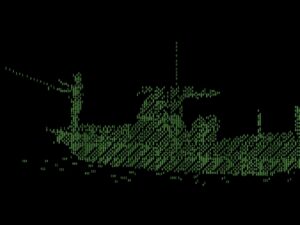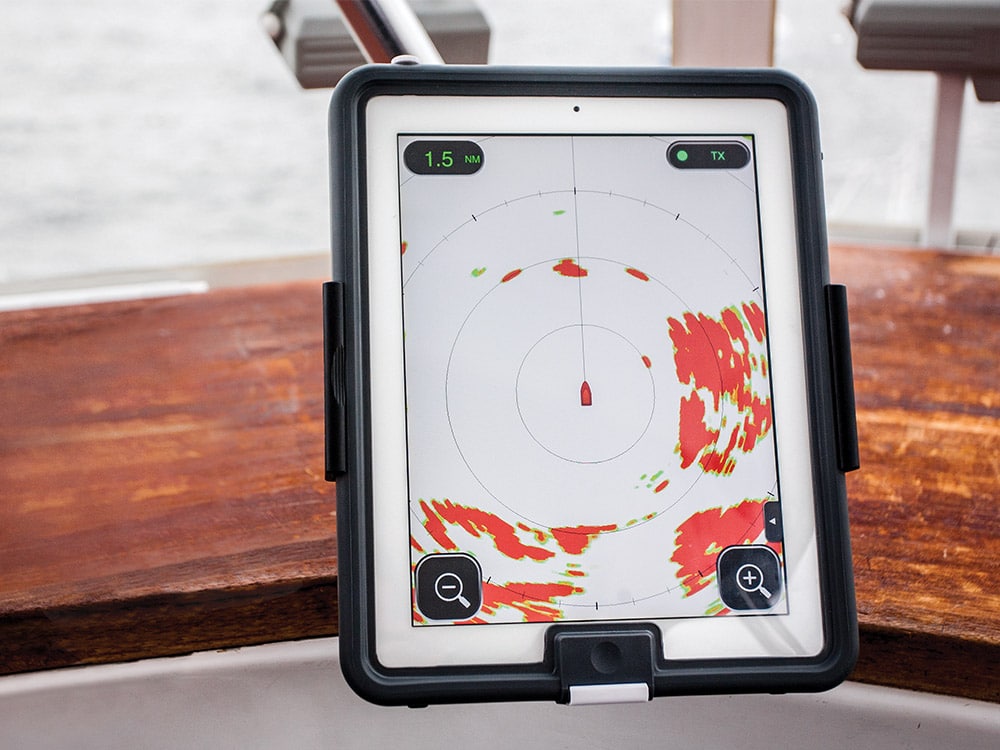
A day will come, sooner than you think, when hard-wired marine electronics network connections are obsolete. In fact, the wireless revolution for marine electronics has already begun. That realization hit me a couple of years ago after experiencing Furuno’s DRS4W 1st Watch 24-nautical-mile radar, the first radar to dispense with a cable connecting display and controls. The 19-inch-diameter 4 kW radar dome uses Wi-Fi, and it doesn’t even need a multifunction display. The DRS4W wirelessly displays radar returns on a smartphone or tablet as shown above.
Just as wireless technology now permeates consumer electronics, it’s also the unstoppable wave of the future in marine electronics.
Over-the-Air Sonar
Transducers traditionally use a bulky multifilament cable to connect to a fish finder or multifunction display. Yet at least one brand of fish finder accomplishes this connection wirelessly.
Vexilar’s SonarPhone SP200 T-Box (about $150) creates its own Wi-Fi hotspot, allowing display and control of the sonar image on a mobile device equipped with the free SonarPhone app. The system includes a transom-mount transducer that plugs into the T-Box.
Like most wireless marine systems, the T-Box requires 12-volt DC hard-wired power, but once up and running, the 200 kHz sonar offers two beam angles — 20 and 40 degrees — and reaches depths of 240 feet. The transducer includes a sea-temperature sensor.
No cellphone reception is needed to use the SonarPhone. The Wi-Fi coverage fworks throughout the boat, from the helm to the aft deck, and the tower to the cabin. That means you can keep an eye on what’s under the boat, even when you’re in the galley making a sandwich or in the cockpit watching the trolling lines.
You can also integrate the Navionics Boating app with SonarPhone to see both a fish finder and Navionics chart in full- and split-screen views within the same app.
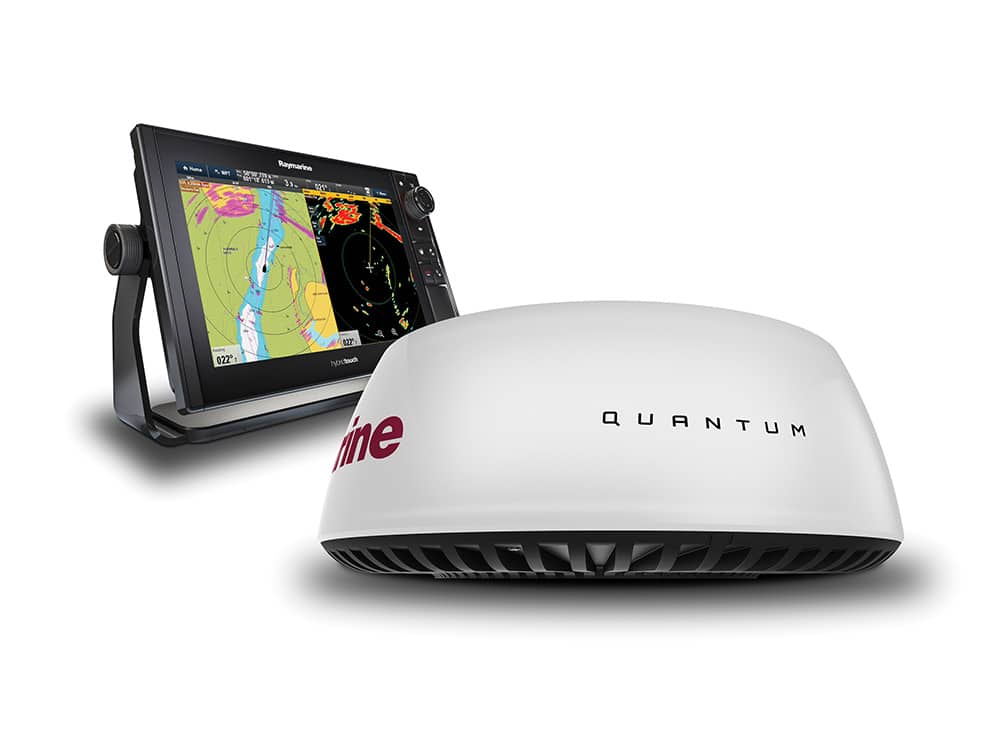
Wireless Radar
At least two manufacturers offer wireless radar systems. As mentioned, the Furuno DRS4W 1st Watch (about $995) connects exclusively to mobile devices. Yet many skippers prefer to read radar on a traditional MFD.
For them, Raymarine’s Quantum Chirp pulse-compression radar dome (about $1,650) networks via Wi-Fi with Raymarine MFDs, including the newer Axiom and Axiom Pro series displays.
The 24-nautical-mile Quantum radar dome (as with Furuno’s DRS4W 1st Watch dome) requires 12-volt DC power, but the wireless network connectivity simplifies installation.
That can be a godsend to T-tops already jammed with wires and cables.
Engine Insight
Engine instrumentation has also gone wireless, allowing skippers to keep tabs on fuel usage, oil pressure, battery voltage, maintenance schedules and more through mobile devices.
With Mercury Marine’s free VesselView Mobile app, for example, you can read Merc’s SmartCraft engine instrumentation data via Bluetooth on a smartphone or tablet.
In order to do this, the engine must be SmartCraft-compatible (which includes Merc outboards 40 hp and up built since 2003) and equipped with a VesselView Mobile plug-and-play module ($275).
The VesselView Mobile system also outlines performance summaries and, perhaps more importantly, spells out fault-code diagnostic information to clarify particular problems and how quickly they need to be addressed.
Such systems help avert serious problems, keep engines running well, and maximize fuel efficiency. The net result is less downtime and more time on the water.
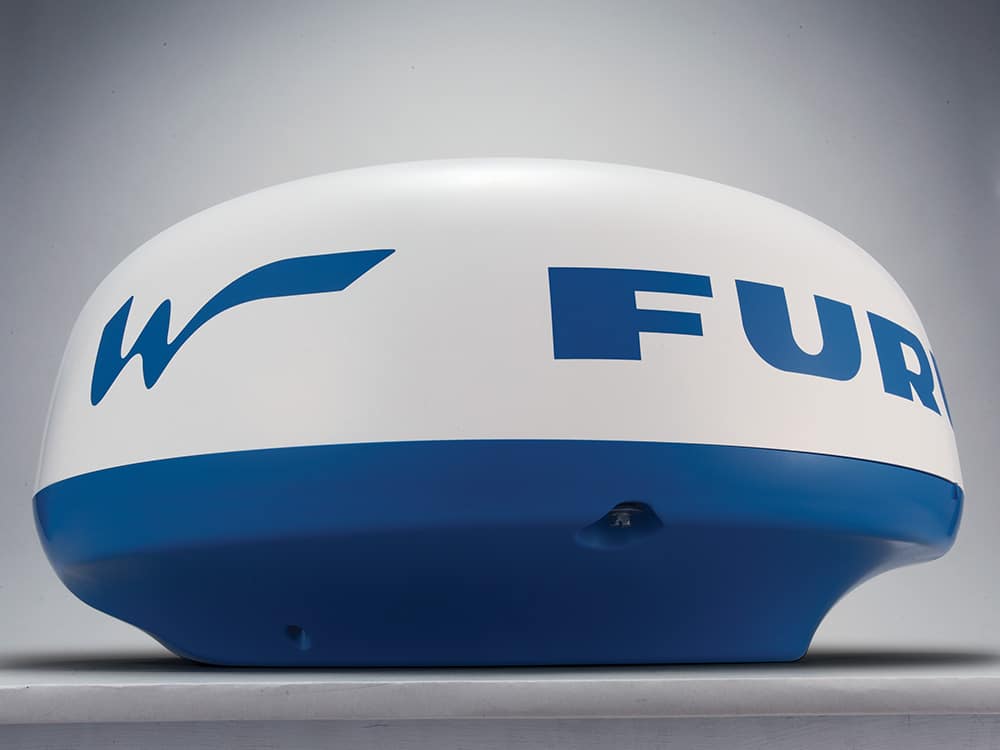
Wireless Security
As with home security systems, many boat security systems rely on wireless connectivity and apps on mobile devices to alert you of suspicious activities in and around your boat. Brands like Aqualarm, GOST and Siren Marine provide both the hardware and monitoring services.
These companies offer a multitude of wireless sensors, such as motion sensors that warn of approaching thieves, an accelerometer that detects onboard vibrations, or a magnetic sensor activated when a hatch opens. Bilge-water sensors and low-voltage detectors and other system monitors are also available.
All of these connect via Wi-Fi with a 12-volt, DC-powered central onboard module, which (when armed) notifies you on your mobile device and/or computer. Boat security systems also sound an on-site alarm such as a piercing siren and blinding strobe light to scare away intruders. In addition, you can turn the system on and off remotely with your mobile device or computer.
Internet Updates
Like your mobile device, most MFDs require periodic software updates to the operating systems to ensure compatibility with new accessories and peripherals. Not so long ago, this required you to download the update to your computer, transfer the file to an SD card, and then plug the card into the MFD and upload it.
MFDs with wireless internet connectivity make the updating process far less cumbersome. With the Lowrance HDS Gen3 and Carbon MFDs, for instance, when you turn on the unit, it searches for a Wi-Fi network. Once the HDS unit establishes a wireless internet connection, it alerts you to available software updates not only for built-in features of the MFD but also for networked components such as the Lowrance Broadband radar or Outboard Pilot systems.
Keeping the software up to date maximizes the effectiveness of your MFD and its features, and ultimately helps you navigate more safely and effectively.
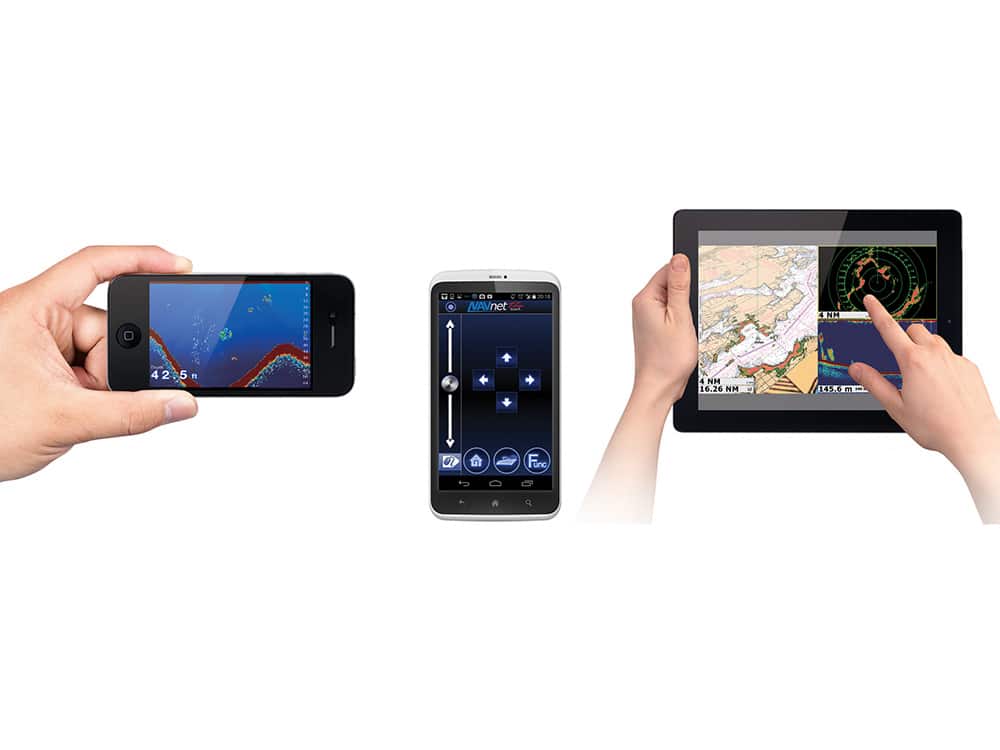
Smart Connections
Nearly all MFDs now let you replicate the display on a mobile device with the right app, thanks to wireless connectivity. With apps such as Garmin Helm, you view and control compatible Garmin chart plotters from an iOS or Android device, as well as plan and view routes on a mobile device, then transfer them wirelessly to the chart plotter with Garmin BlueChart Mobile.
In yet another example, Furuno’s NavNet Remote app lets you take full control of your NavNet TZtouch2 MFD. You can remotely operate and view the display from your mobile device when connected to a wireless network. Such apps let captains stay in touch with the chart plotter, radar, sonar and more, no matter where they go on the boat.
These represent just a few examples of how wireless technology is changing the way marine electronics share and display information — changes that ease installations, maximize versatility, increase safety, and help boating anglers find more fish. The revolution has begun.




